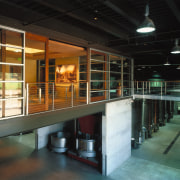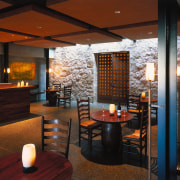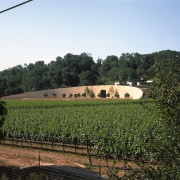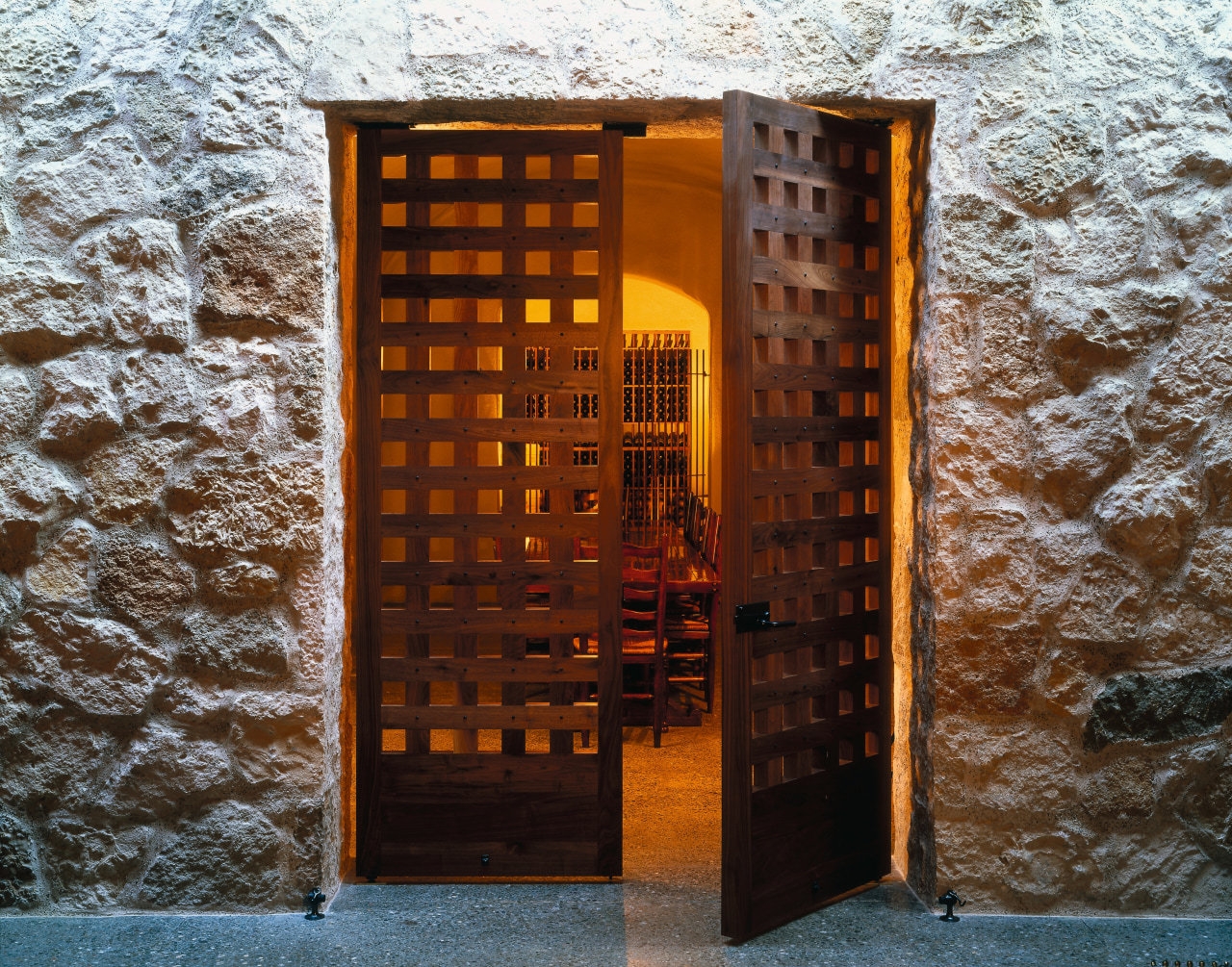Bordeaux-style blend
Nestled in a natural amphitheatre, this modern winery burrows into the hillside giving visitors a new slant on traditional wine making

For many years, it seemed the typical architectural response to designing a winery was to mimic traditional European estates.
In recent years, however, architects have put a modern twist on this tradition, creating buildings that firmly integrate the architecture with the landscape and wine-making processes. It's a philosophy that is paying off in terms of the increasing public interest in wineries and the record numbers of people taking winery tours.
The Quintessa Winery in the Napa Valley is a good example. Designed by Walker Warner Architects, the main winery building takes a simple, sculptural form, with a sweeping curvilinear facade that is a direct response to the site's natural hillside amphitheatre.
Architect Greg Warner says the design was driven by both the natural contours of the site and the wine-making functions.
"The owners Agustin and Valeria Huneeus did not want the winery to reflect any preconceived notions," he says. "The architecture needed to reinforce the uniqueness of the wine a Bordeaux-style blend that is made from grapes in the surrounding vineyards."
Warner says the sweeping stone facade, which reaches into the vineyards on either side, follows the natural ridgeline of the property. While the original plan was to use stone mined from the property, it was substituted for a stronger stone that features throughout the Napa Valley.
The wall is 10.6m high at its centre, and large enough to conceal vehicle parks and mechanical services. The height also creates the necessary volume for the double-height interior. This space includes a mezzanine or catwalk level.
"Positioning the wall against the hillside enabled us to use the land in several ways," says Warner. "By burrowing into the hill, we were able to create a network of caves for cellaring the wine. We also created a sod roof and used the vertical elevation to process the wine."
Warner says grapes are hand-picked and taken by tractor up the farm road that parallels the curvature of the building. The grapes are deposited and sorted on the roof terrace. From here, they are gravity-fed through a series of skylight hatches to the fermentation room on the mezzanine floor below.
"All aspects of the wine-making process are visible," says Warner. "This transparency was another key requirement. Depending on the season, guests can view the process from start to finish."
Energy efficiency has also been taken into account. The irrigated sod roofs, thermal mass, and the use of night air ventilation preclude the need for mechanical refrigeration in the bottling and wine case storage areas. Energy-efficient ideas have also been incorporated into the design of the detached office and reception building. Large roof overhangs and wood screens shield the structure from the summer sun.
Despite its contemporary exterior, the winery does incorporate more traditional elements. The cellar caves, for example, are lined with wine barrels and curve like spokes to meet in a central underground room. Warner says the curve of the caves adds an air of mystery.
"You can't see from one end to the other, which encourages exploration. The curves also reiterate the sweeping curve of the front facade."
The circular underground room in the centre of the cave network is shaped like a rotunda and has a central water feature. The space can be used as a gathering point for tour groups or for wine tastings.
The detached office directly above and behind the wall houses administration offices and a tasting room. This pavilion is also symmetrical and built on the same axis as the main building.
"Like the main winery, the architectureis straightforward and honest it is not trying to be something it isn't," says Warner. "The raw materials the concrete floor and walls, the cork ceiling and the structural steel columns become the finishes. It's a casual space designed to reinforce the key function of the winery the wine-making process."
The room leads to a small cave cellar, which is a more intimate tasting room.
Credit list
Interior designer
Mechanical engineer
Structural engineer
Landscaping
Metal and glass curtainwall
Waterproofing
Membrane roofing
Facade construction
Wood screens
Custom light fixtures
Civil engineer
Electrical engineer
Construction company
Exposed steel framing
Caves
Lighting design
Sod roof
Custom metal doors
Ceiling in tasting room
Cabinetry and custom woodwork in tasting room
Story by: Trendsideas
Home kitchen bathroom commercial design
Walk this way – garden pathways to lead your thinking
From farmhouse to farmstead
Sculptural highlight













